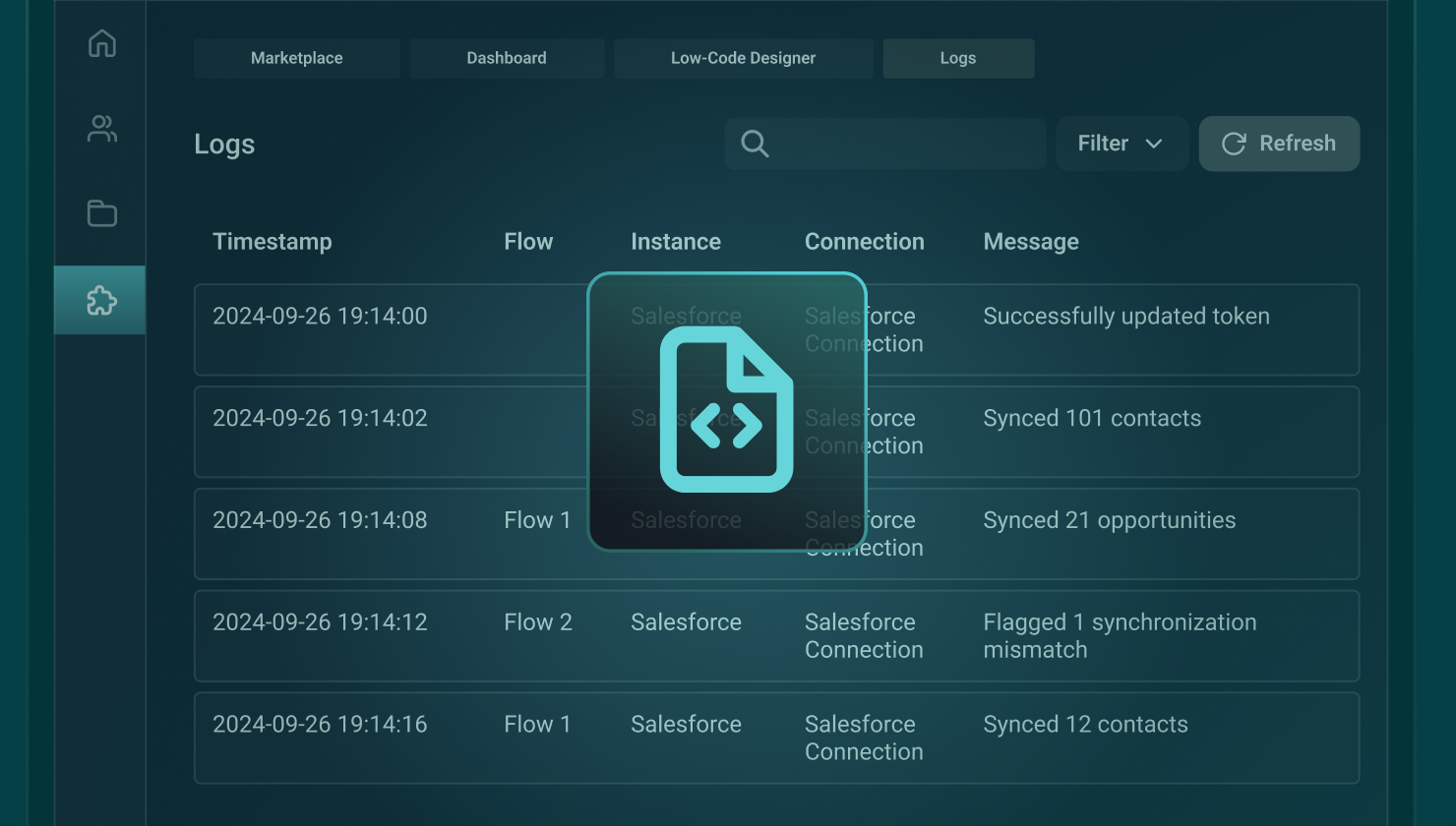Automaker Stellantis recently suffered an extensive data breach. The attackers apparently gained access via OAuth tokens tied to a Salesforce integration. Unfortunately, the company is not alone, as data breaches have become commonplace.
B2B SaaS apps face greater security threats than legacy systems because they rely on accessible APIs and multi-tenant architectures. And these breaches aren't cheap, costing their victims millions of dollars in direct costs. In addition, integration-related breaches can destroy partner trust, drive crippling downtime, and disrupt business processes well downstream of the compromised systems.
That's where zero-trust comes into the picture. The practice of never trusting and always verifying means that you treat every access request as potentially malicious, no matter its origin. zero-trust requires that you explicitly verify identity, context, and behavior before granting access.
This approach contrasts with the traditional perimeter-based security that treats things inside a network as trusted and everything outside as untrusted. Because SaaS apps are in the cloud, and largely outside of internal networks, the perimeter (AKA castle-and-moat) security construct no longer works.
While moving to zero-trust requires a shift in thinking, B2B SaaS integrations only amplify its necessity.
B2B SaaS integration security concerns
Because of their very nature, B2B SaaS integrations highlight specific security concerns:
- They usually traverse the public internet – As a result, data in transit is vulnerable to man-in-the-middle attacks, especially if they are not using end-to-end encryption. Integrations often include near-real-time syncs, increasing the opportunities for possible interceptions.
- APIs are often publicly accessible – B2B APIs enable critical ecosystem growth, but they also create enormous attack surfaces, such as undocumented endpoints and over-permissive scopes. Weak rate limiting can attract DDoS attacks, and unvalidated payloads are vulnerable to injection attacks.
- A single integration may have thousands of users – Credential management can become complex (and easier to exploit) as the number of users for an integration skyrockets. Users with shared secrets in common can lead to lateral movement in data breaches.
A tailored zero-trust security approach can largely mitigate these and other security weaknesses.
Let's see how that would work.
Incorporating zero-trust security into integrations
Here are practical ways to ensure that your integration customers and their data are protected by zero-trust security.
Verify identity continuously
Traditional security relies on checks at login or connection time. zero-trust requires persistent identity validation, often on a per-transaction basis. Here's how:
- Use token-based authentication like OAuth 2.0 or JWTs that expire frequently and enforce regular re-verification.
- Establish strong mutual auth between your SaaS product, integrations, and partner apps.
- Employ short-lived, scoped credentials via a central secrets repository for service accounts instead of long-lived access tokens.
- Integrate identity providers that support multi-factor authentication and identity federation.
Apply least-privilege data flows
Every integration should expose only what is necessary to support the related business processes. Anything more is a security risk. Here's how:
- Limit API access to the endpoints relevant to each integration.
- Use granular role-based access control (RBAC) or attribute-based access control (ABAC) to enforce contextual permissions.
- Regularly audit access logs to ensure that privileges are enforced over time as the integration and API are continuously updated.
Validate every input
Integrations can be exploited through malformed requests or injection attacks. A zero-trust framework assumes that every input could be malicious and validates accordingly. Here's how:
- Enforce strict schema validation for API payloads, with minimal API permissions.
- Reject requests that don't conform to expected types, formats, authentication policies, or anything else.
- Use runtime monitoring to detect unusual traffic patterns or request sequences.
Isolate credentials and connect to only trusted systems
Credentials are often the first target for integration attackers. Compartmentalization and system trust validation help limit breaches if they do occur via this vector. Here's how:
- Store API keys, tokens, and secrets in secure vaults (like HashiCorp) and rotate them automatically.
- Isolate integrations from core infrastructure using micro-segmentation.
- Validate the authenticity of connected systems with device certificates and TLS mutual authentication.
Add zero-trust layers for integrations
Layered enforcement minimizes risk when another control fails. Here's how:
- Implement continuous posture assessment tools that evaluate risk before allowing each connection.
- Embed zero-trust in incident response procedures to expedite issue isolation.
- Encrypt data (using TLS 1.3 or KMS-backed encryption) in transit and at rest, ensuring it is unreadable by unauthorized agents.
Implement developer-centric zero-trust practices
Legit zero-trust must be embedded into your SDLC, not added as an afterthought. Here's how:
- Train developers on secure coding practices that align with zero-trust principles.
- Use automated tests to verify identity, access, and data validation logic in every build.
- Treat the entire CI/CD pipeline as critical, ensuring each stage operates with the lowest possible privileges.
- Implement versioning and secure component reuse to prevent the recurrence of insecure functions.
- Use POC environments that mimic zero-trust for testing.
- Restrict devs to trusted tools and extensions and ensure that any open-source component is screened for known vulnerabilities.
Establish compliance alignment
zero-trust complements major compliance requirements by embedding security into every part of the integration, including the build, deploy, and manage processes and the integration itself. Here's how:
- Establish zero trust principles to reinforce controls required by GDPR, CCPA, and regional data-residency obligations.
- Document policies and enforcement measures to demonstrate compliance readiness.
- Provide zero-trust analytics and logs for audit trails, incident response, and regulatory reporting.
Why Prismatic is the best platform for zero-trust integrations
We built Prismatic from the ground up as an enterprise-level, secure, scalable, and reliable integration platform.
Prismatic keeps current with various compliance frameworks, from SOC 2 (for security controls) through GDPR, HIPAA, and CJIS. Compliance is regularly confirmed via audits.
The platform also includes a robust authentication framework to support OAuth 2.0, API keys, and various custom auth configurations. As part of our flexible configuration process, much of the complexity of authentication is abstracted away from the end user. We also capture connection and instance logs for everything.
All the complexities with security/token management are handled for you, and there is a great user interface to populate customer-specific configurations.
Security is baked into our AWS back-end, which uses industry-leading policies. We also rely on VPC architecture with compute and database servers segmented onto private subnets that are not directly accessible from the public internet. We execute customer code via isolated compute nodes, so that what's happening for one customer can't interact with what's happening for another.
As a result, everything securely scales for thousands of users with per-tenant isolation.
Our platform allows you to securely connect your API to all the other APIs your customers use while supporting zero-trust verification at every step.
With Prismatic, zero-trust isn't yet another initiative for you to take; it's the way things are.
Zero-trust security is essential for the integration journey
Implementing zero-trust security for your B2B SaaS integrations doesn't remove all your security issues. However, it is a framework that you can rely on to protect your customers and their data. As with any security resource, it must evolve as new threats (like AI-generated attacks) are defined.
In addition, a zero-trust security approach for your integrations delivers immediate ROI for reduced risk of data breaches, easier compliance processes, and prospect/customer trust.
In a world of SaaS, public APIs, and massive scale, perimeter security is obsolete. Are you ready to apply zero-trust to your integrations? Start a free trial and see how we've embedded security in every layer of Prismatic.




